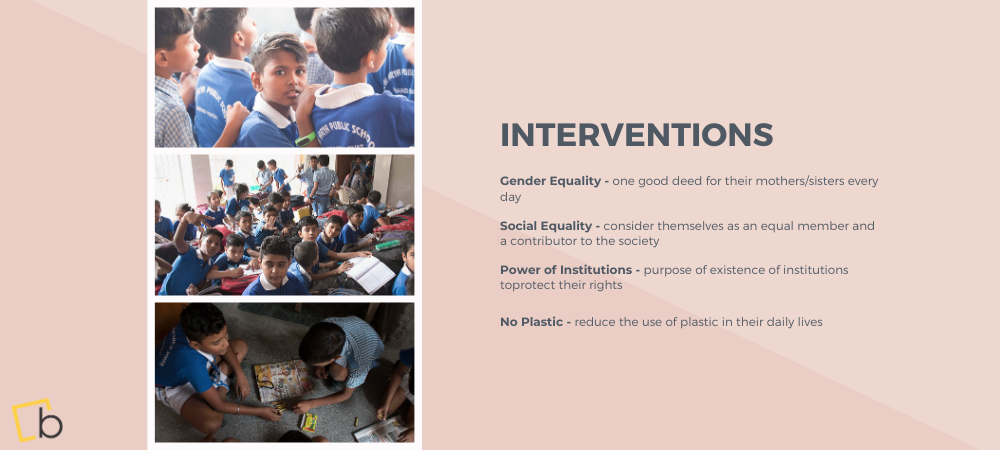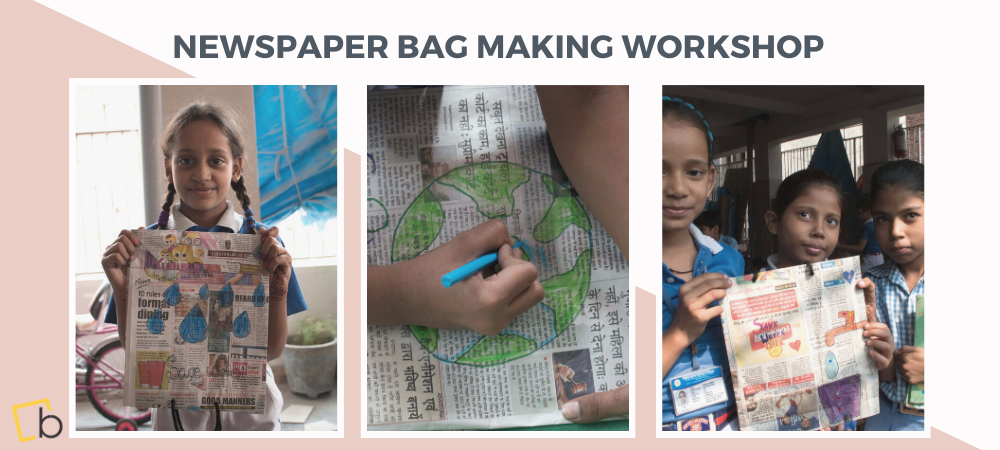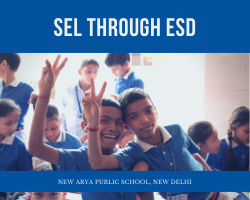Most of the times when we teach about Sustainability and other related topics, we find ourselves doing what was called the Adjectival Education in the 60s and 70s. Often focussing on Environment and Climate Change, we forget to touch upon other important factors that contribute to making societies sustainable. Read our blog to know how Adjectival Education is different from Education for Sustainable Development.
IT’S NOT JUST ABOUT THE ENVIRONMENT
When we interacted with a bunch of school kids at New Arya Public School, New Delhi, we found out that coming from the urban-poor section of the society, these kids who have spent their lives in slums follow more sustainable living practices than most of us. Reducing and Recycling is the order of the day for them.
However, their societies face sustainability challenges of a different kind. Living in slums, these kids see abuse and discrimination based on gender, caste, and social status on a daily basis. Poor health, sanitation, and eating practices have put these kids in overall poor living conditions.
Such living conditions adversely affect the key competencies of Compassion and Empathy in kids and it was quite evident with these students too. We used our own Socio-Emotional Competencies Assessments and freely available assessments created by Panorama Education, to confirm the lack of these competencies among the students.

APPROACH
Working with kids in classes 3 to 5, we wanted to be very careful about the topics we touch upon and the skills we wanted to enhance. Choosing to work with topics closer to their communities, we worked on the following themes.
-
Gender Equality - This theme was picked to make everyone in the class more empathetic about the diversity of individuals around them. While understanding gender issues, the students were given an opportunity to do one good deed for their mothers/sisters every day.
-
Social Equality - It was interesting how Social Equality sessions were completely reversed in this school. While making students compassionate about those who do not enjoy the same social status as them, we also encouraged these students to consider themselves as an equal member and a contributor to society.
-
Power of Institutions - The government and the civil society come together to protect the rights of the poor, underprivileged, women, and children. However, most of the time, those who are in need do not know how to access this help. When we worked with these kids, we made them understand the purpose of the existence of such institutions and how they can approach these institutions in case of an emergency.
-
No Plastic - Living in slums, their lives revolve around plastic use. From cheap packaging to even housing solutions, Plastic forms an essential part of their lives. We worked with these kids to reduce the use of plastic in their daily lives.
While working on the problems stated above, the 3-month long intervention in the school consisted of
-
Assessments and surveys - To understand the present understanding of the students
-
Workshops for kids - To make kids understand and examine their own living conditions
-
Activity sessions for kids - To make kids work together to solve their problems
-
Training sessions for teachers - For continued learning of the students
-
Evaluation surveys - To assess the impacts
OUTCOMES
-
Students have started respecting gender diversity around them more. They understand and respect each other’s individual existence
-
Students understand the concept of society and social justice. They also have knowledge about the institutions that protect the rights of children.
-
Enhanced competencies of Empathy and Compassion, measured through in-house and online tools
-
Enhanced capacity of the school to take up Sustainability related topics within classrooms

EDUCATION FOR FUTURE
With the support of their school, these students have set up a newspaper bag workshop. In this workshop, everyone is invited to fold and decorate some bags made of waste newspapers. Each bag is made with utmost precision and love. Each bag can carry weight up to 1 kg and can be used to carry stationery and dry food items to school.


